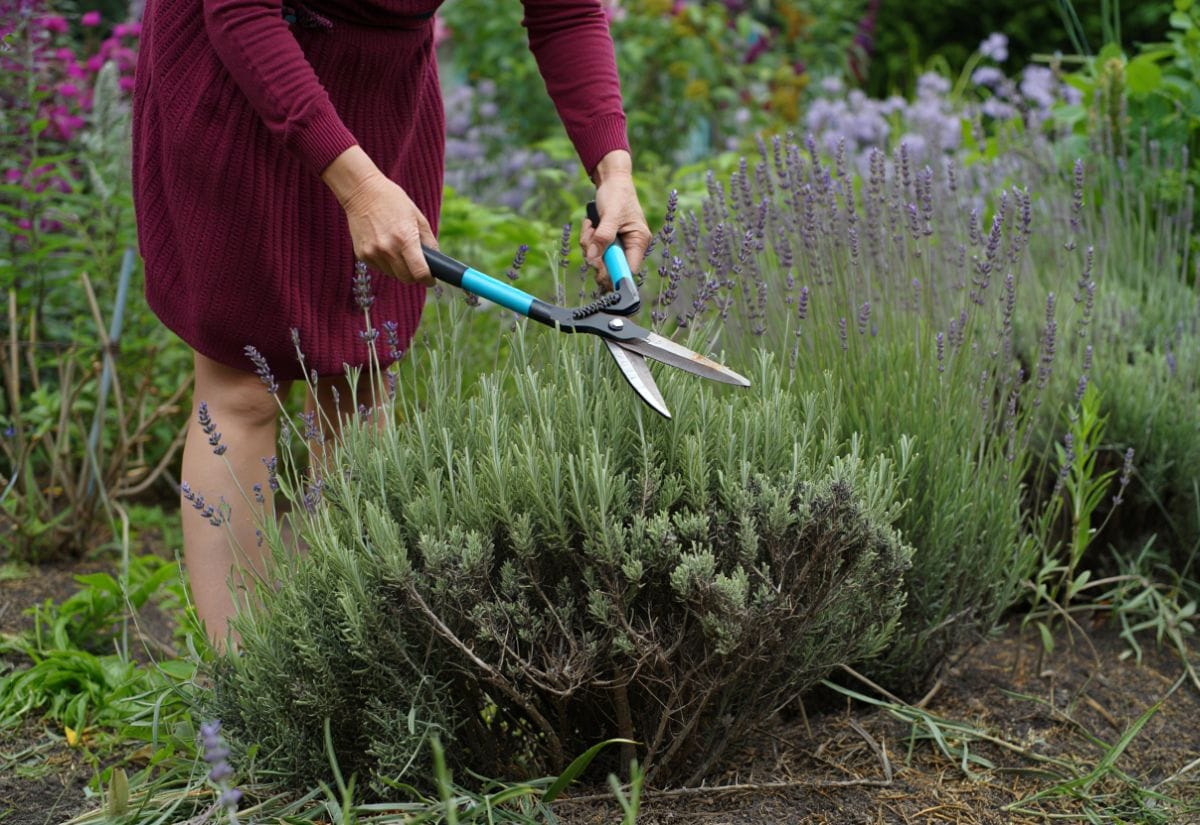
If I had the choice between bundling up with my pruners on a bitter January morning or spending an hour in the garden on a crisp September afternoon, I know which one I’d pick. Early fall is not only kinder to the gardener, it’s often the best time for the plants, too. Over the years I’ve learned that putting off certain pruning jobs until spring usually leads to snapped stems, fewer flowers, and an overgrown mess that’s harder to fix.
September pruning does more than just neaten things up. For many plants, this late-season trim keeps them strong through winter, encourages healthy new shoots, and lays the groundwork for next year’s display. Neglect it, and you risk tired growth, tangled branches, and blooms that don’t live up to their potential.
Of course, not everything in the garden should be cut back now — but some plants truly need it. Roses, ramblers, herbs, berries, and a few key shrubs all benefit from attention this month. Give them a thoughtful trim now, and you’ll head into winter with a tidy garden and step into spring with healthier, more productive plants.
1: Climbing Hydrangeas
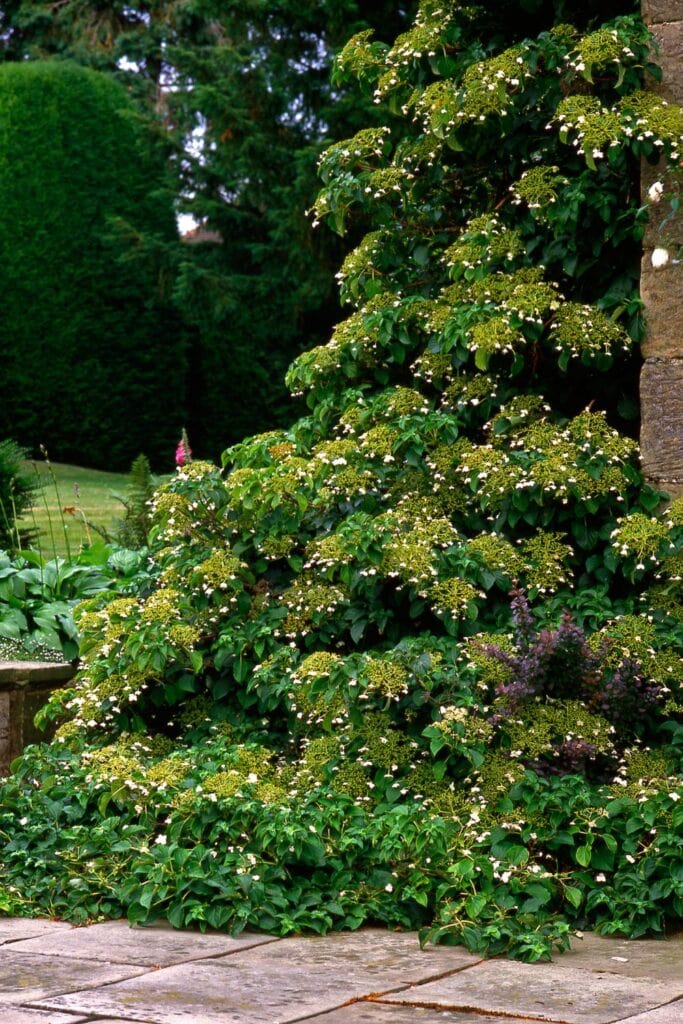
Climbing hydrangeas are stunning once they’ve covered a wall or trellis with their white lace-cap blooms, but by September those flowers are long past their best. If they’re left in place, the shrub starts to look untidy, and the heavy flower heads can weigh down stems as autumn winds and rain set in.
September is the perfect time to tidy them up. Once flowering is finished, snip off the spent blooms just above a pair of healthy leaves. This light trim not only freshens the look of the plant but also encourages stronger growth that will support next year’s flowers. While you’re at it, thin out any weak, crossing, or damaged stems so the framework stays open and healthy.
I also like to gather some of the fading petals before they drop. A handful tucked into a jar makes a lovely homemade potpourri, and it feels like carrying a little piece of summer into the colder months.
With just a few minutes of attention in September, climbing hydrangeas stay neat and manageable, and you set them up for another season of full, showy blooms.
2. Lavender (English Types like ‘Munstead’ and ‘Hidcote’)
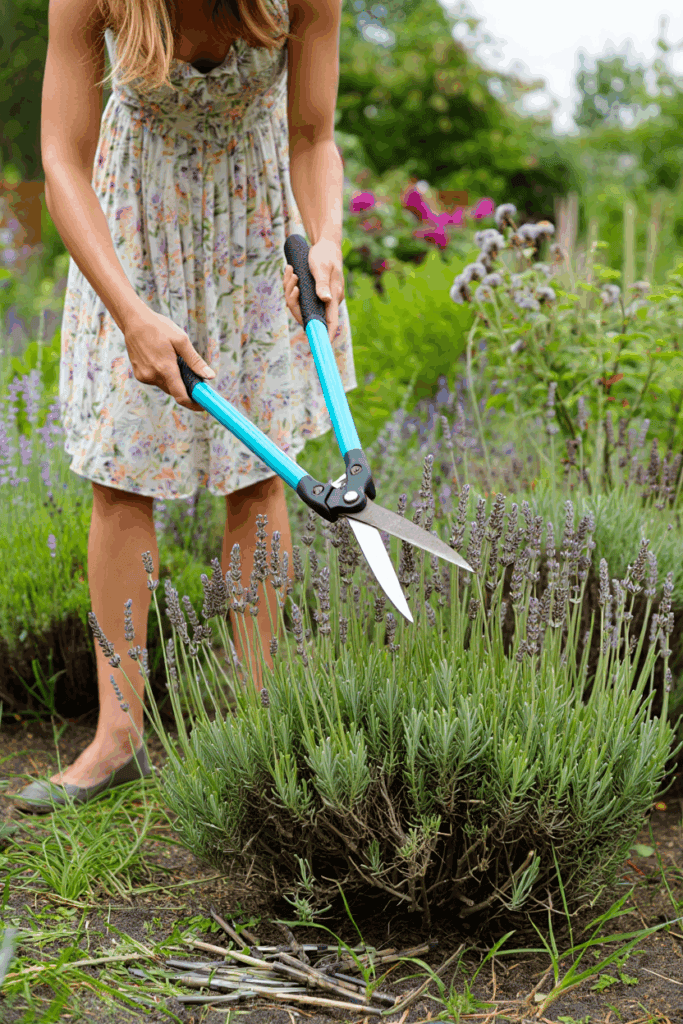
The end of summer is the right moment to give lavender some attention. By September, the flowers have faded and the stems begin to sprawl, but the weather is still warm enough for the plant to recover before winter sets in. If you wait too long, you risk exposing fresh cuts to cold temperatures, which can weaken the plant. If you cut too early in the heat of summer, tender regrowth may scorch in the sun. That’s why early fall is the sweet spot.
Compact varieties such as ‘Munstead’ and ‘Hidcote’ respond especially well to a September trim. Pruning now keeps them tidy, helps prevent the woody centers that so many older lavender plants develop, and ensures a fuller flush of blooms next year. Plants left uncut are more likely to split under the weight of snow or ice, and over time they lose that soft, rounded shape that makes lavender so appealing.
When I prune, I keep it simple. I snip off the spent flower stalks and shorten the green growth by about a third. I always avoid cutting into old woody stems, since those rarely grow back. I also wait for a stretch of dry weather. Lavender hates damp conditions, and pruning on a rainy day can make fresh cuts more likely to develop fungus.
One of my favorite parts of this job is saving the trimmings. A handful of dried buds in a little cloth bag makes a wonderful drawer freshener, and I often slip one into my pillowcase. The fragrance lasts for months and is a small reward for an easy but important task that keeps lavender looking beautiful year after year.
3. Wisteria
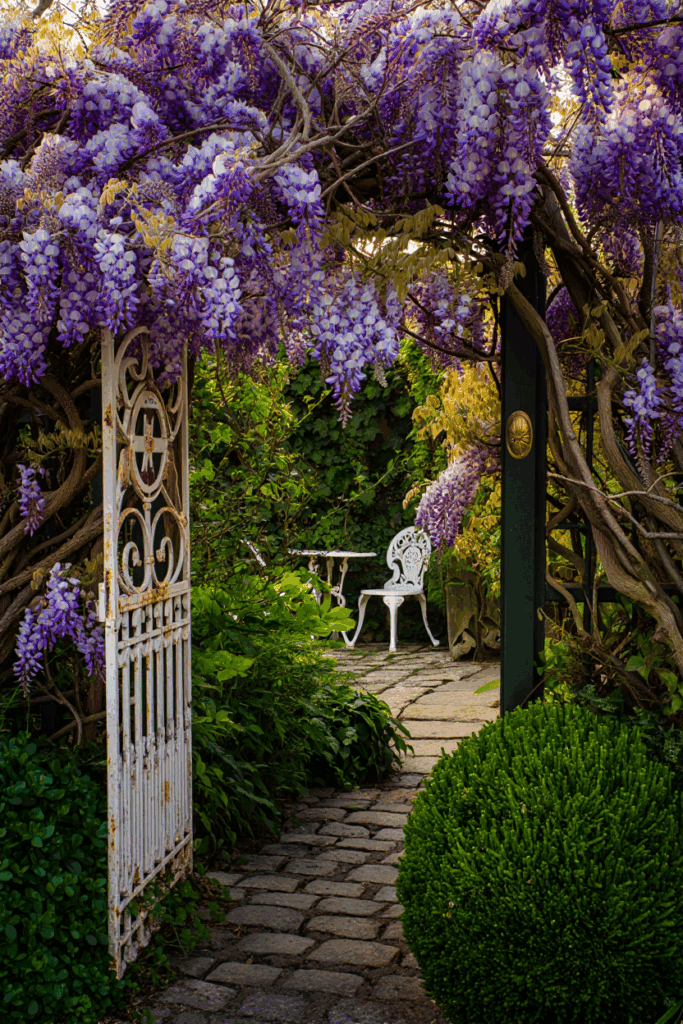
Wisteria has a way of stealing the spotlight in spring with those cascading blooms, but keeping it in check takes steady attention. By the end of summer the vine is usually sending out long, green tendrils that snake across walls, trellises, or anything they can latch onto. If those shoots aren’t cut back in September, the plant puts its energy into more vine growth instead of developing the flower buds that make it so spectacular.
A light September prune makes all the difference. I cut those thin, whippy stems back to about a handful of buds from the main branch. This simple step keeps the framework of the plant neat and allows sunlight to reach the buds that are already forming for next year. I’ve skipped this task before and ended up with a wall of leafy growth but far fewer blossoms the following spring—a mistake I don’t repeat.
Another reason to prune now is structure. Wisteria grows with such force that it can loosen supports or overwhelm nearby plants if left unchecked. A quick trim helps prevent damage and keeps the vine where you want it. For younger plants, this is also the moment to guide their shape—whether you’re training it to a pergola, arch, or wall.
It only takes a little time with sharp pruners in September, but the payoff is huge. A neat vine going into winter, less risk of tangled stems, and best of all, a spring display that’s fuller and more reliable.
4. Rambling Roses

Rambling roses grow differently than most other roses, and the trick to pruning them is knowing the difference between old wood and new wood. The long canes that bloomed this summer are old wood. Once they’ve flowered, they’re done, and keeping them only clutters the plant. The strong shoots that came up over the summer are new wood, and those are the ones that will carry next year’s flowers.
When I prune in September, I start by cutting out the old wood. I take those spent flowering canes right down to the base or to a healthy side shoot. This clears space in the framework and keeps the rose from turning into a thick, tangled mass. Then I turn to the new wood. Instead of cutting these young shoots, I tie them in carefully along the arch, fence, or trellis. Training them now sets up the shape of the rose and positions next year’s blossoms exactly where I want them.
The goal isn’t to cut the whole plant back hard like you would with hybrid teas in spring. It’s about clearing away the tired old stems, shaping the fresh growth, and making sure everything is secure before fall winds arrive. Done right, the plant heads into winter neat and strong, and by next summer you’ll have a curtain of flowers on those new canes instead of a jumble of thorns.
5. Summer-fruiting Raspberries
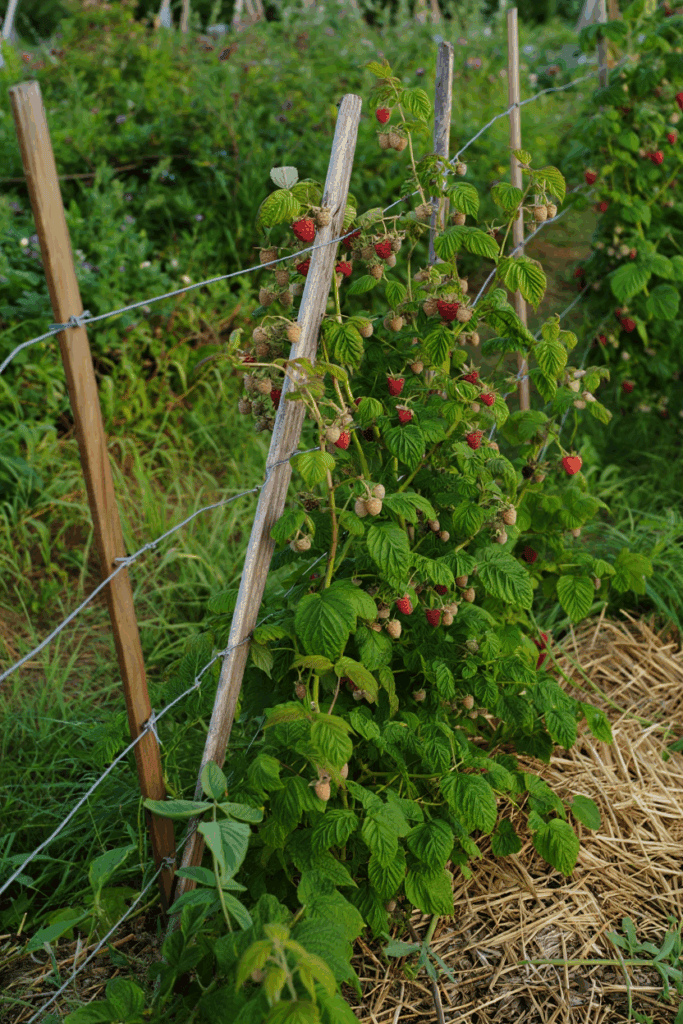
Homegrown raspberries are one of the sweetest rewards in the garden, but to keep them producing well year after year, pruning is essential. Summer-fruiting varieties grow differently than fall types, so they need a more careful approach.
These raspberries bear fruit on canes that are in their second year. That means the canes that fruited this summer are finished and won’t produce again. By September, those old canes are easy to spot — they’re brown, woody, and often a bit brittle. Cut them right down to the ground and clear them out.
Next, turn your attention to the fresh green canes that grew over the summer. These are the ones that will carry next year’s crop. Choose the strongest, healthiest canes, space them evenly along a support, and tie them in to keep them upright through the winter. Any weak or overcrowded stems can be removed so the plant isn’t competing for space and light.
Pruning in September keeps the patch neat, prevents disease from spreading through old growth, and sets you up for another bumper harvest the following summer. A few careful cuts now make all the difference when it comes to a healthy, productive raspberry bed.
6. Honeysuckle
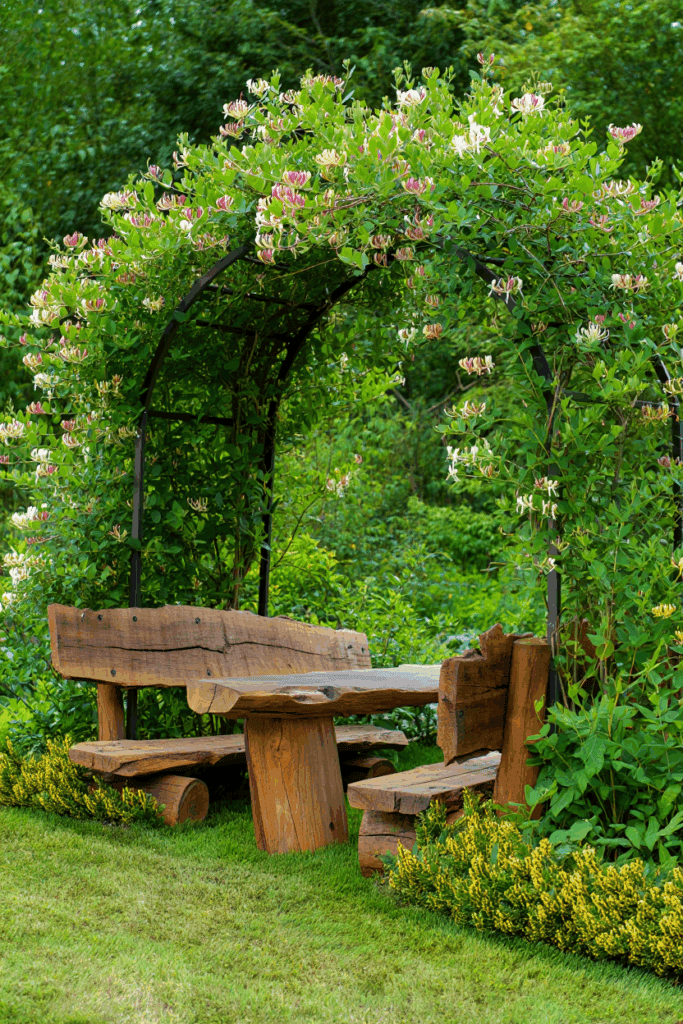
Honeysuckle is one of those plants that can turn a simple fence or arch into something truly romantic. With their sweet fragrance and long season of bloom, climbing honeysuckles are cottage-garden favorites. But by the end of summer, they often start to sprawl, sending shoots in every direction and piling growth on top of itself. If they aren’t pruned, the plant can become overgrown and flower only at the tips, leaving bare stems below.
September is the right time to give summer-flowering honeysuckles a light trim. Once they’ve finished blooming, cut back that season’s flowering shoots by about one-third, trimming to a healthy side shoot where possible. This keeps the plant tidy, improves air circulation, and encourages fresh growth lower down the framework.
The key is not to cut too hard. Honeysuckle doesn’t respond well to severe pruning all at once, so think of September as a shaping session rather than a reset. A light, careful trim now will keep the plant full and balanced, so next summer you’ll have flowers running from the base all the way to the top, instead of just a tuft of color overhead.
7: Jasmine
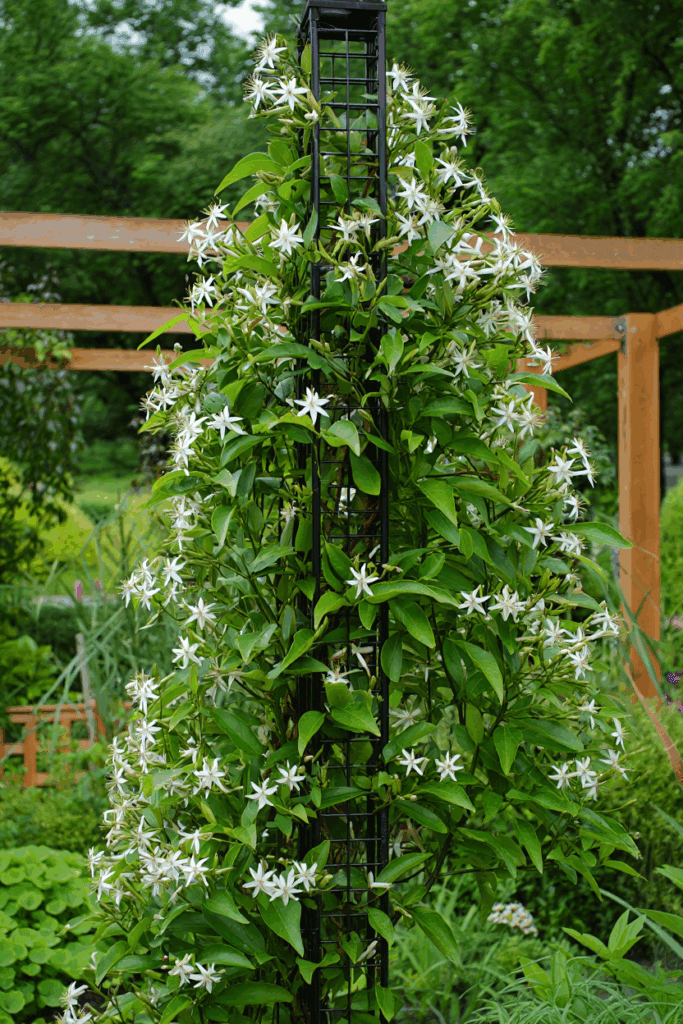
Jasmine is one of those climbers that rewards a little attention at the end of summer. By September, once the flowers are finished, the plant often has long, straggly shoots that need tidying up. If they’re left unchecked, jasmine can quickly become overcrowded, which means fewer flowers and more tangled growth the following year.
The best time to prune is right after flowering in late summer or early fall. Start by cutting back the stems that have already flowered, taking them down to a strong side shoot lower on the plant. This opens up the framework and gives new shoots room to develop. At the same time, thin out any weak, damaged, or crossing stems so that the plant stays airy and manageable.
The goal isn’t to cut jasmine back hard, but to guide its shape and keep it balanced. A light September prune gives new growth time to mature before winter, setting the plant up for an early flush of flowers when the warm weather returns.
8: Yew Hedges
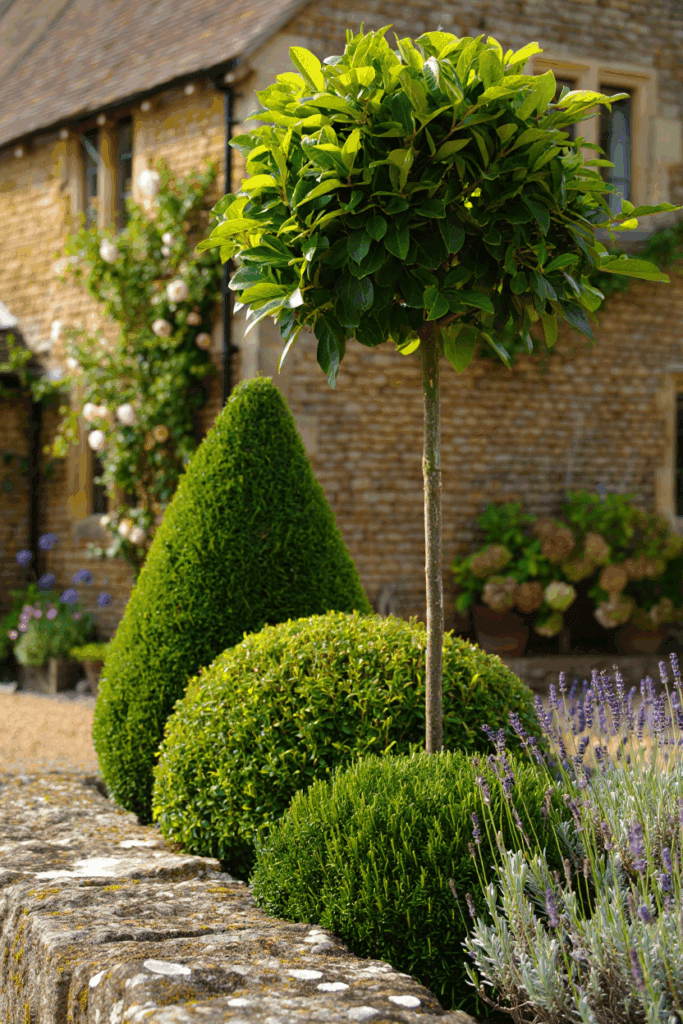
Yew is one of the most traditional hedge plants, valued for its dense evergreen foliage and ability to be clipped into clean, formal lines. But it also grows faster than many people realize, often putting on nearly a foot of new growth each season. If it isn’t trimmed back before winter, the hedge can lose its shape and look untidy until the following year.
September is the ideal month to give yew its final cut of the season. By this point, the year’s growth has slowed, so trimming now allows you to neaten the outline and keep the hedge compact through the dormant months. Aim to remove just the soft, current season’s growth rather than cutting deep into old wood, which doesn’t always reshoot. Keeping the sides slightly narrower at the top than at the base also helps light reach the lower branches, preventing thinning.
It’s important to check carefully for active bird nests before pruning, as hedges are popular shelter sites. And because all parts of the yew plant are poisonous, gloves are essential.
9: Blackberries

Blackberries reward you with baskets of fruit in summer, but they can also leave behind a tangle of canes that quickly turn into a problem if not handled in September. The golden rule is simple: old canes out, new canes in.
The canes that fruited this year have done their job and won’t produce again. Cut them right down to the soil line and clear them away. Then turn your attention to the fresh green canes that grew over the summer. These are next year’s producers. Choose the strongest, space them evenly along a trellis or wire, and tie them in securely. Thin out any weak or damaged canes so the plant isn’t overcrowded.
Taking this time in September keeps the plant clean, lowers the risk of disease, and ensures that all the energy goes into those new canes, setting you up for another bumper harvest next year.
10: Perennial Herbs such as Sage, Thyme, and Oregano
Perennial herbs are some of the most reliable plants in the garden, but even the toughest ones need a little care before winter. By September, sage, thyme, and oregano often show signs of slowing down. Their stems can get woody, the foliage starts to look scrappy, and the plants lose that full, bushy shape that makes them easy to harvest from.
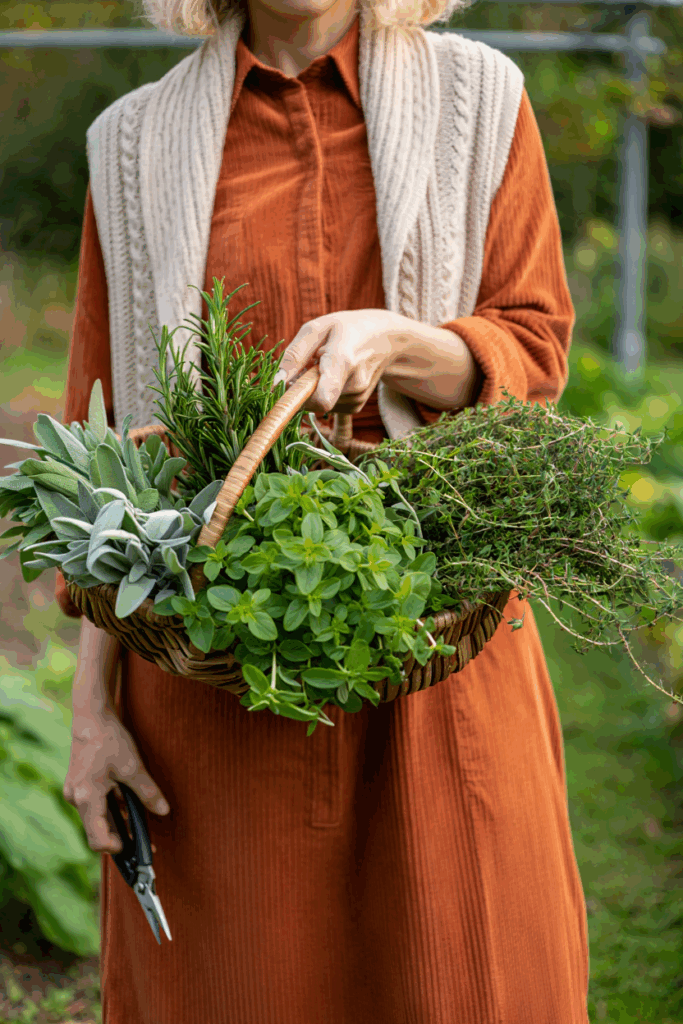
The best fix is a gentle haircut. Trim back around one-third of the fresh, leafy growth, concentrating on stems that look straggly or are beginning to brown. Always leave the older woody base alone — it won’t reshoot if you cut into it. The goal is to refresh the plants without stressing them, giving them a tidy outline that carries through the cold months.
An early fall trim pays off twice. Not only does it keep your herb bed neat, but it also encourages a flush of healthy new shoots when spring warmth returns. And as a bonus, those cuttings are still packed with flavor. Dry them, freeze them, or use them right away in soups, roasts, or teas — one last harvest before the plants tuck themselves in for winter.

Written By
Amber Noyes
Amber Noyes was born and raised in a suburban California town, San Mateo. She holds a master’s degree in horticulture from the University of California as well as a BS in Biology from the University of San Francisco. With experience working on an organic farm, water conservation research, farmers’ markets, and plant nursery, she understands what makes plants thrive and how we can better understand the connection between microclimate and plant health. When she’s not on the land, Amber loves informing people of new ideas/things related to gardening, especially organic gardening, houseplants, and growing plants in a small space.
